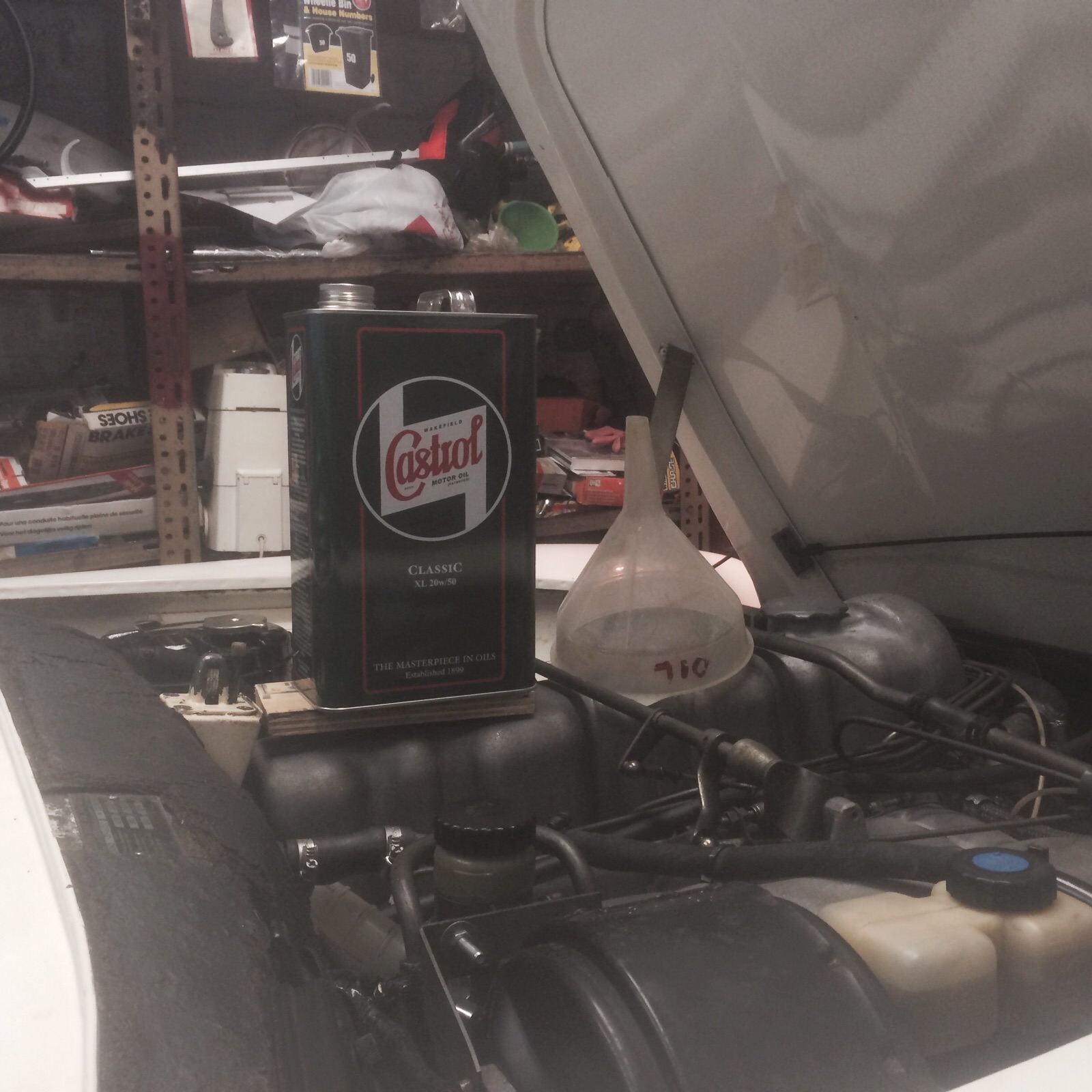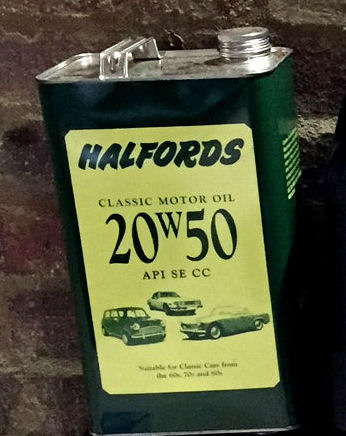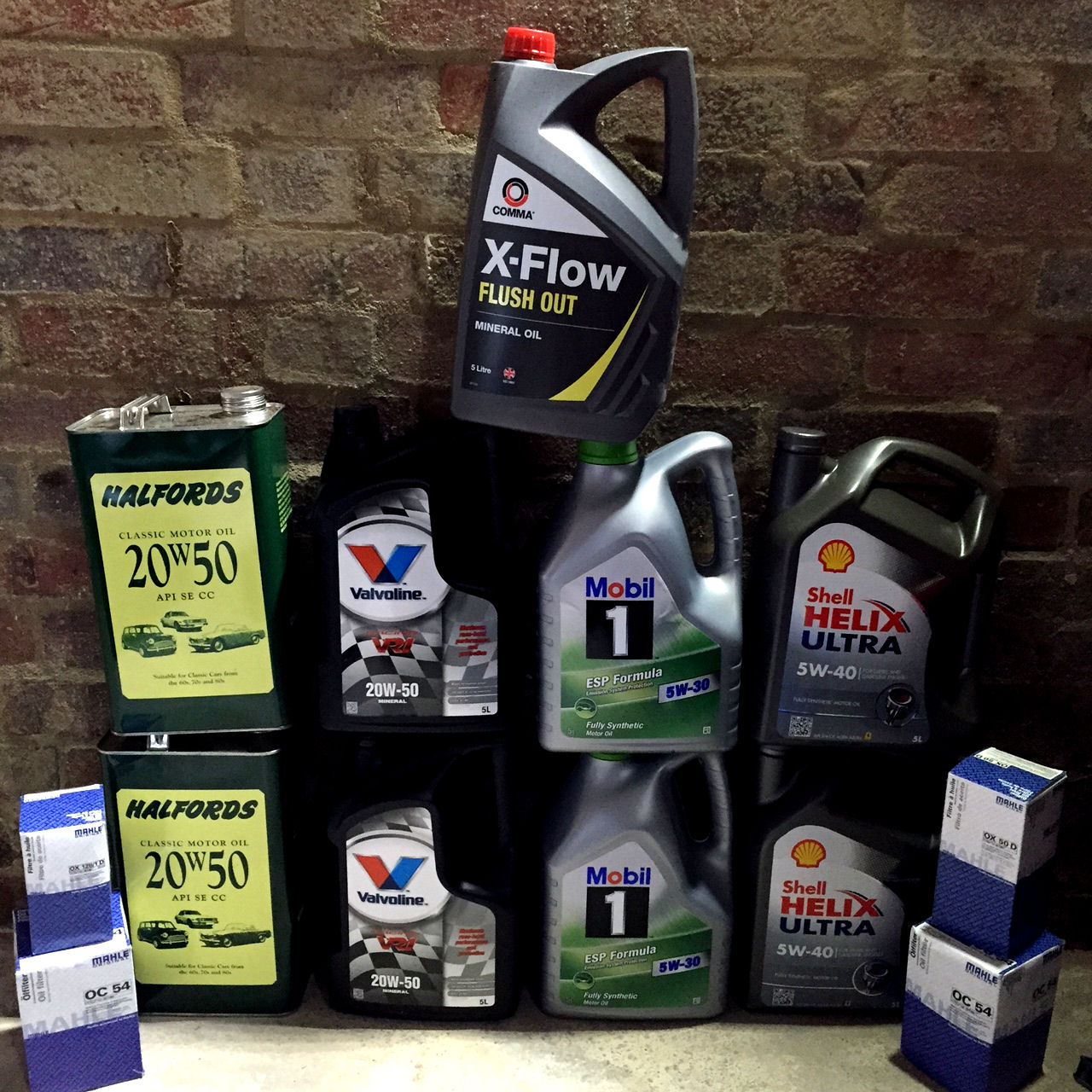how to choose engine oil viscosity for antique car To determine the correct viscosity for an application you need to know the operating temperature of the oil in that application. A fellow who has an original owners manual for a 1964 EH Holden says it recommends to use an SAE 20 or a 10W30 engine oil.
How To Choose Engine Oil Viscosity For Antique Car, Hi John I highly respect your opinion on anything relating to cars. 5w30 motor oil the 20 indicates that the oil has a lower viscosity and is thinner at higher temperatures. My local auto accessories store owner who has a number of classic and vintage vehicles says 10W30 oils werent around then so I dont know who to believe.
 Make Sure You Ve Got The Right Engine Oil In Your Car For The Season With Our Handy Infographic Caradvice Engineering Oils Car Mechanic From pinterest.com
Make Sure You Ve Got The Right Engine Oil In Your Car For The Season With Our Handy Infographic Caradvice Engineering Oils Car Mechanic From pinterest.com
Oil gets thinner as it gets hotter. Well get to viscosity in a minute Sometimes the manufacturer will apply a small decal somewhere under the bonnet that lists the brand and grade of oil that is appropriate for that car. Here are three tips to help you make an informed decision.
A Texaco oil expert advised me to use 20W-50 in my Hupmobile 1929 and 10w-40 in my other prewar cars.
A Texaco oil expert advised me to use 20W-50 in my Hupmobile 1929 and 10w-40 in my other prewar cars. Be careful of knock-offs that look similar. I am using a 5W-40 in my 1930 Dodge 8. All modern oil is much better than the old stuff. Thicker oils have more resistance to shearing and losing film strength at higher temperatures.
Another Article :

In this case 5W-30. This is the oils viscosity expressed as a number like 5W-20. Startup is when most wear occurs so a lower viscosity better enables the oil pump to get oil around the engine quickly. A conventional API CE 20W-50 oil thats ideal for older engine designs plus a dedicated 60 oil thats specifically aimed at higher mileage units. Be careful of knock-offs that look similar.

Ford Model T Riding In Style Classic Ford Trucks Ford Models Ford Trucks A multigrade oil is better than a single grade because the single grade oil tend to be too thin at higher temperatures. Motor oils specifically blended for vintage cars often will contain a ZDDP additive. Under its own Car Lube label is a small but useful range of classic lubricants including Daytona. The first part of the code is the cold temperature grade and the second part is the high temperature grade. Look for the API starburst and donut The center of the donut tells the thickness and temperature range of the oil.

How To Choose The Right Engine Oil Chart Oils Type Chart To determine the correct viscosity for an application you need to know the operating temperature of the oil in that application. All modern oil is much better than the old stuff. Oil tends to thicken or increase in viscosity at low temperatures and thin out or decrease in viscosity at higher temperatures. The first part of the code is the cold temperature grade and the second part is the high temperature grade. Viscosity and Temperature Look for an engine oil that tolerates high temperatures and maintains its viscosity that is its ability to protect at high temps.

Wholesale Fully Synthetic Lubricant Engine Oil For Car From M Alibaba Com Lubricant Oils Plastic Bottle Design So due to viscosity 5w20 is a thinner oil during operating temperatures whereas 5w30 is thicker during. We now had two numbers sandwiching the W on containers. Not all of us know what engine oil in our engines is for. Your car handbook will tell you the grade s and therefore the viscosity that you should use. In most warm countries 20W50 is the normal oil recommended.

Tips For Choosing The Best Motor Oil For Your Classic Car This oil had the cold viscosity of one single grade oil and the hot viscosity of another. For example motor oil displaying 20w50 simply told us that the oil performed like a 20w single grade when cold and a 50w single grade when hot. Thin low viscosity oils flow easier to protect engine parts at cold temperature. So due to viscosity 5w20 is a thinner oil during operating temperatures whereas 5w30 is thicker during. In most warm countries 20W50 is the normal oil recommended.

1946 Ford Sportsman Woody Coupe Brochure Usa Car Ads Classic Cars Vintage Cars The first number is relevant on startup ie. Some manufacturers now offer synthetic oil that includes high amounts of zinc as an additive. A multigrade oil is better than a single grade because the single grade oil tend to be too thin at higher temperatures. Your car handbook will tell you the grade s and therefore the viscosity that you should use. Here are three tips to help you make an informed decision.

How To Choose The Right Engine Oil For Your Classic Car Higher viscosity grades have more resistance to flow than lower viscosity grades. Your car handbook will tell you the grade s and therefore the viscosity that you should use. In most warm countries 20W50 is the normal oil recommended. A Texaco oil expert advised me to use 20W-50 in my Hupmobile 1929 and 10w-40 in my other prewar cars. Generally synthetic oils with high zinc packages exceed the standards needed for classic car and vintage cars no matter how you use the car.

Pin By Rare Paper Detective On Gt Garage Art Old Garage Sign Art The more you know about your car and the era in which it was built the easier it will be to choose the right oil. My local auto accessories store owner who has a number of classic and vintage vehicles says 10W30 oils werent around then so I dont know who to believe. Or if your car is 7 years old or more its a good idea to look for an oil with the best viscosity for high mileage before your engine starts stalling. Viscosity measures the resistance to flow. Thicker oils have more resistance to shearing and losing film strength at higher temperatures.

1941 Ad Chrysler Group Llc Tailored Car Seat Cover Blue Car Woman Driv Chrysler Car Advertising Chrysler Group Llc Thin low viscosity oils flow easier to protect engine parts at cold temperature. So a 5W-30 will flow easier than a 10W-30 at start-up temperatures and a 10W-30 will flow easier than a 10W-40 at normal engine operating temperatures. Viscosity is a measurement of oils weight and actually describes how thick the oil is. This is important as engine oils naturally thicken as they cool and thin as they are heated. When comparing 5w20 vs.

How To Choose The Right Engine Oil For Your Classic Car The first part of the code is the cold temperature grade and the second part is the high temperature grade. I am using a 5W-40 in my 1930 Dodge 8. All modern oil is much better than the old stuff. In this case 5W-30. A multigrade oil is better than a single grade because the single grade oil tend to be too thin at higher temperatures.

7 Tips For Dragging Your Classic Car Out Of Winter Hibernation Eurol B V A fellow who has an original owners manual for a 1964 EH Holden says it recommends to use an SAE 20 or a 10W30 engine oil. Choosing the correct viscosity oil for your cars engine requires some basic understanding of oil viscosity and its ratings. Engines that run low oil temps require. Oil viscosity differs from one. Whether it will pass the government exhaust test for particulates especially is doubtful but you can try.

What Synthetic Oil Is Better For Older Cars Best Synthetic Motor Oil Reviews Just chose the correct viscosity. Engines that run high operating oil temperatures require higher viscosity oil. This enables the 5w20 motor oil to reach engine parts quicker and create less drag that reduces fuel economy. Oil is the lifeblood of any engine so choosing the right oil for your classic car is essential. A conventional API CE 20W-50 oil thats ideal for older engine designs plus a dedicated 60 oil thats specifically aimed at higher mileage units.

The Outer Topic Automotive Art Illustrations Motorsport Art Automotive Art Most motor oils viscosity is rated based on how thick it is at zero degrees Fahrenheit represented by the number preceding the W which stands winter as well as its thickness at. The 5 in this example is the cold viscosity and 20 is the hot viscosity at the engines full running temp. The thing is that engine oil goes in different viscosity grades that define how thick oil is and its fluidity. And even fewer actually know that the choice of engine oil depends on the season or climate the car is used in. Ken Tyger and Nick Dixon with PennGrade 1 high performance oil talk about how to choose the correct viscosity of oil for your vehicleThe engines of classi.

Classic Car Oil Halfords Ie Oil gets thinner as it gets hotter. This oil had the cold viscosity of one single grade oil and the hot viscosity of another. In most warm countries 20W50 is the normal oil recommended. A multigrade oil is better than a single grade because the single grade oil tend to be too thin at higher temperatures. Generally synthetic oils with high zinc packages exceed the standards needed for classic car and vintage cars no matter how you use the car.

How To Choose The Right Engine Oil For Your Classic Car Your car handbook will tell you the grade s and therefore the viscosity that you should use. Oil is the lifeblood of any engine so choosing the right oil for your classic car is essential. A conventional API CE 20W-50 oil thats ideal for older engine designs plus a dedicated 60 oil thats specifically aimed at higher mileage units. A Texaco oil expert advised me to use 20W-50 in my Hupmobile 1929 and 10w-40 in my other prewar cars. Higher viscosity grades have more resistance to flow than lower viscosity grades.










